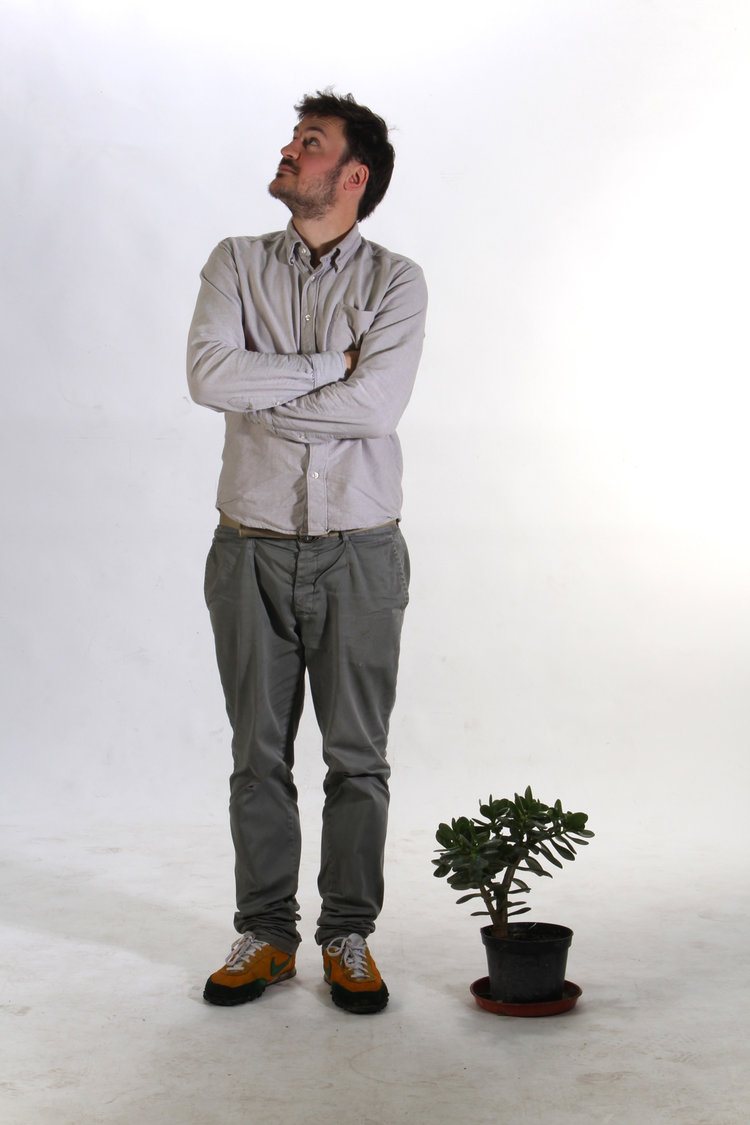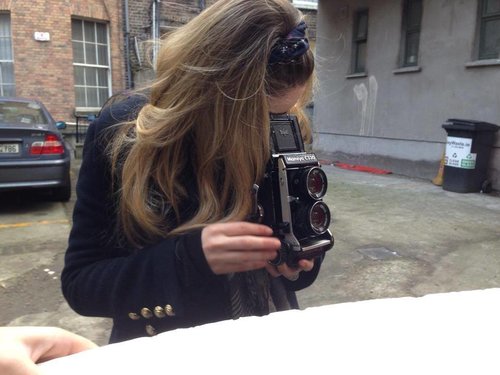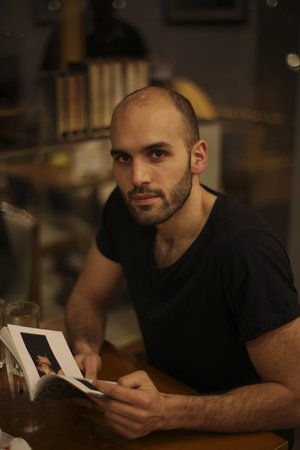
LECTURER, MASTER OF DESIGN (M.DES) IN PHOTOGRAPHY AT GLASGOW SCHOOL OF ART
M_PLN: Please tell us about your academic and cultural education, where did you study photography, who influenced you the most?
DS: I was born and I grew up in Venice, where I got my BSc in Urban and Landscape planning, which I think helped me to have an idea of the complexity of the dynamics, which characterize the world we live in: a world where many languages are spoken, even within people which think there are speaking the same one. I believe there is an interesting connection between the role of the Urbanist, the planner, and the one of the artist. I like to think that our role as artists is the one of the ‘translators’, being able to process and communicate in various different ‘languages’, re-represent information in a variety of ways, showing new perspectives and possibilities, providing platforms for reflection, dialogue and inclusion. The core of my final thesis in Venice was a photographic project on the history of cinema theatres and after I graduated, for a couple of years, I decided to form professionally as a photographer, working as an assistant and teaching assistant at the IUAV university of Venice. Soon after I got involved in an incredible adventure called Sismycity. Sismycity has been a year long project on the aftermath of the earthquake which hit the city of L’Aquila, not far from Rome, in 2009. This work became a collateral event of the Venice Biennale in 2010 and has been an incredible learning platform, which pushed me to start applying to AIR and to apply for a master in photography at the Glasgow School of Art. My formation as a photographer was very formal, documentary and architectural, working with Fulvio Orsenigo and Alessandra Chemollo, but during my master I explored the potential of interaction with the spaces to create my own language. Andy Stark has been a very important person in this process.
IM_PLN: We are interested on teaching profiles, so, can you tell us how did it start? What directed you towards a teaching career?
DS: I got my first teaching experience as an assistant in Venice several years ago, where I discovered that I really enjoyed working with the students, but it wasn’t until last year, spring 2013, that I effectively started teaching. Last month the first group of students I worked with for the full length of the master, graduated. Now in few weeks times I will meet a new group of master students and another year will start. لعبة الروليت المجانيه
IM_PLN:Thinking of Glasgow School of Art, could you describe the photography program being taught there? Can you discuss the challenges and your role as a teacher of photography? طريقة لعبة بينجو
DS: The M.DES. in photography at the Glasgow School of Art asks the students to arrive with a proposal, which is discussed during the course of the year (or the two years) through a series of weekly tutorials where the students are guided, suggestions are given, ideas discussed, work in progress reviewed, etc. The students are coming from a variety of backgrounds and countries all over the world. سباق حصان It is our role as educators to support the creative process, suggesting but not revealing everything, stopping early enough so the students are able to discover things making them their own. This is probably the part I find most challenging: the process of appropriation and metabolization of knowledge for the construction of their own voice and their visual language.
IM_PLN: Since you divide your time between the teaching and your professional artistic work, how do you manage these different paths and related points of view?
DS: My personal research feeds into the teaching, also, the relationship with the students is always very direct and open. Sometimes we discuss books or documentaries or radio programs, share exhibition and other events to go and see. I think is very important for them to explore outside the boundaries of the art school world while they are still studying for their master. It is easy to get absorbed inside the bubble of the art school world and this can limit the amount of critical thinking and diversity of the influences in their work.
IM_PLN: What about your professional and artistic paths, and photographic research? Tell us about your main interests and what projects you have worked on in recent years. What are you working on now at the moment?
DS: I am about to start another residency, just before the beginning of the academic year. I will be in Cardiff, where I will spend 6 weeks as part of Cardiff Contemporaries. I am preparing a show in Glasgow and I am working on a book about Sown, an ongoing work that is now into its 3rd year of life. I am also putting together a series of small books/photozines, which are helping me to reflect on a series of works developed in past year.
IM_PLN: What are your inspirations in terms of books and photographers that influence you the most? Can you recommend a book to our readers?
DS: When I started was incredibly inspired by the works of Hiroshi Sugimoto, especially by the Theatres series where the light projection of a movie in a cinema theatre literally shapes the space around and makes it what it is. I was also fascinated by the geometrical perfection of the works of Bert and Hila Becker and by the work of their students from the Dusseldorf school of photography, in particular the work of Candida Hofer in the libraries. I was very inspired by Joel Sternfeld, especially in the occasions where his work impacted the world around him, like in the case of the High Line in New York, where the exhibition of the photographs he took ‘walking on the highline’ became the catalyst for the requalification of the old railway system into a suspended park. In terms of works which are less photographic and more about temporary interventions I will mention the most important for me, which is Chirsto’s Running Fence, I was amazed when I watched the documentary by Albert Maysles (Running Fence, Fandor, 1978). Something more recent which inspired me a lot, and it’s funny because he is my age, it’s JR, there is an awesome TED talk online about his work women are heroes, pasting huge pictures in different cities around the world. In terms of books I recently bumped into an awesome book by Adam Broomberg & Oliver Chanarin called Fig. It is probably my favorite book just now.
IM_PLN: Can you refer an emerging photographer that recently interested you? Why?
DS: By working with emerging photographers and by being one myself is very difficult to make a list. Just out the top of my head: Max Pincker, we met a couple of years ago in Brussels, and since then he is doing extremely well. His work plays with reality and fiction in a very fascinating way.
IM_PLN: You took part in many artist residences, can you give any particular advice for young photographers aspiring to circulate and take part in such circuits?
DS: Yes I can, just a very simple advice: do not hide your work. Let your work circulate and be discussed. Talking about it is the best way to move it forward. Asking questions, showing engagement. It will sound obvious but the most important thing about residencies is applying. Many times you will be last minute and decide not to go for it, well I believe that the last push makes the difference between your work being seen or not.
IM_PLN: With rapid and continuous technological change those who want to pursue a creative career must always be updated. In addition, the vast competition requires more skills to young people entering the labor market. What are the tips and suggestions you have for the younger generation?
DS: This question could be asked to an art or design student but also to a medicine student or a law student, which once had automatically a job just because they finished their studies. The technological changes always affected all the professions and being updated has always been key. Careers In the creative world, as far as I know, have always been more difficult in terms of the amount of energy and effort needed to get a job in the field or being recognized at the end of the studies. I can say that in my experience it’s a slow process and you are never arrived, as soon as you think you are at a stage in your life when you have enough experience and network, etc. you get out of fashion, stop getting exhibitions and opportunities, and have to start again from scratch. We have to be able to re-invent ourselves every time and work and live for the cause and thanks to this we get all the inspirations and inputs that establish a relation between us and the outside world.
IM_PLN: How do you think the internet and everything that is connected is affecting the production and sharing of projects and images?
DS: In my humble opinion this is overproduction of images shared on the internet had the effect of increasing the number of artist books for example, or different ways of looking, less fast and more reflective. It’s very hard to give an answer, which isn’t a forecast. I will say that maybe we are looking at something similar to what happened when painting felt challenged by the technological advancements of photography (Daguerre and friends), and had to re-invent itself. In a similar way I think the internet and the new-tech are after all offering an opportunity to us for re-inventing the photographic medium.
IM_PLN: And last, the reflection on the mirror, what’s your opinion about the Portuguese photography panorama? Do you find echoes in Glasgow?
DS: I don’t know enough about Portugal to answer this question properly, but I can tell you that there is something that connect Glasgow and Porto. Perhaps both being at the periphery of Europe or perhaps because both are postindustrial cities. In Glasgow there is an interesting relationship between the artscene and the making of the city (A social sculpture is a good book to get an idea). Many artists and collectives are making work insitu, using the numerous empty and abandoned spaces, warehouses, factories, etc. I was in Braga to see the photography festival and the most interesting work there I think were the ones which found an unconventional installation set up (eg. Hung in a street, in a container in the middle of a square, etc). It made me think of The Social, encountering photography, a small festival in Sunderland, where the exhibitions took place mostly in public spaces, in an attempt to construct a different relationship between the audience, the place they live in and the artworld.



